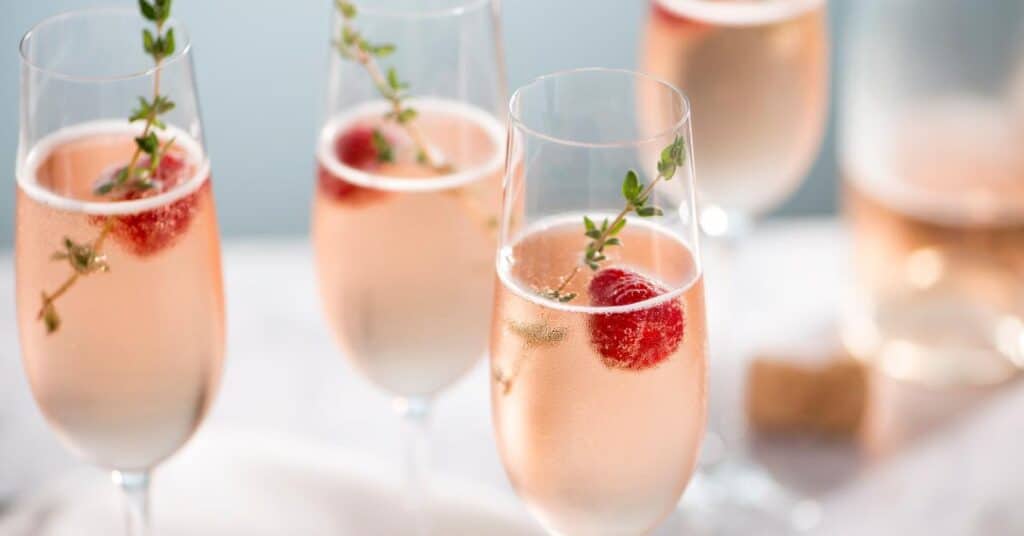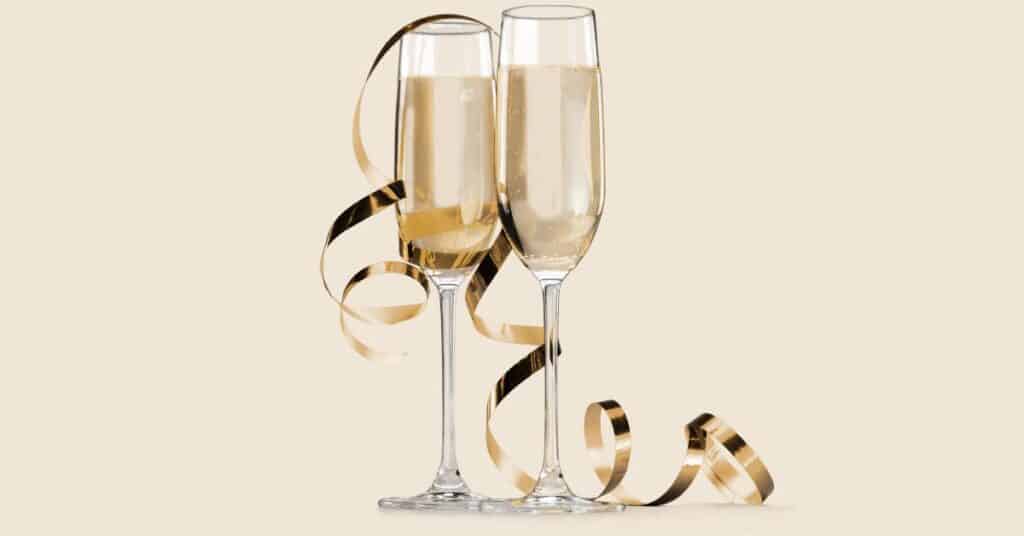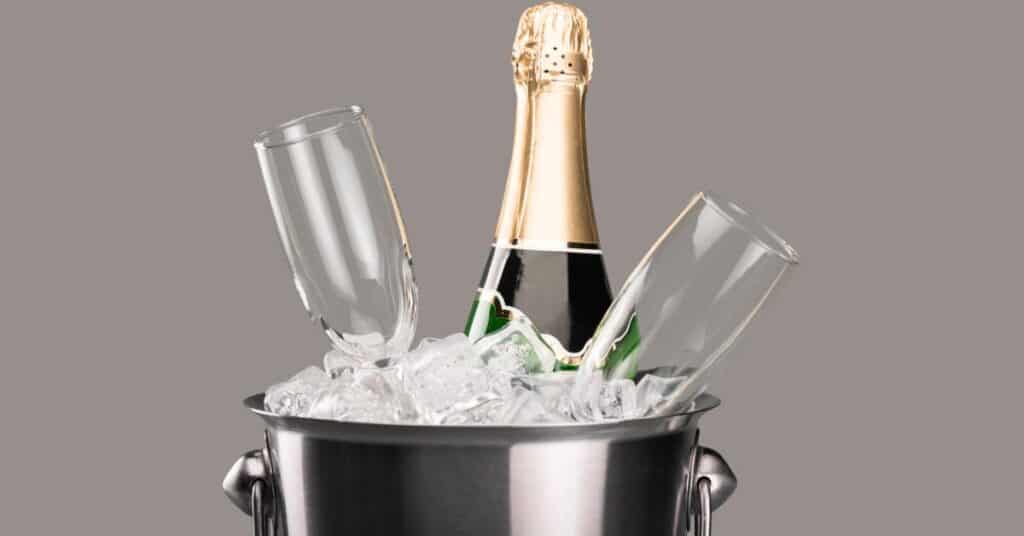
Even a drink as sophisticated as champagne has room for improvement. In this blog post, you’ll learn how to make champagne taste better.
What Is Champagne?
Champagne is a sparkling wine that comes from the Champagne region in France. To be classified as champagne, the wine must be produced in this region and follow strict regulations for its production method, known as the “Méthode Champenoise.” This process includes a secondary fermentation in the bottle, which creates the signature bubbles and effervescence we associate with champagne.
Ideal Temperature
Here are some tips on how to reach the desired temperature for champagne:
- Use a wine fridge or cooler: These devices are designed to store and serve wine at a specific temperature. Set the temperature according to the type of champagne you have, as mentioned above.
- Refrigerate the champagne: Place your champagne bottle in the refrigerator for at least 3 hours to chill it properly. Regular fridges are usually set around 37°F, so you may want to monitor the temperature to avoid over-chilling the champagne.
- Ice bucket: If you’re short on time, immerse the bottle in a mixture of ice and water in an ice bucket for 15-20 minutes. The water helps to conduct heat away from the bottle, chilling it more quickly than ice alone.
- Avoid the freezer: While putting a bottle in the freezer might seem like a fast way to chill it, doing so can cause the pressure inside the bottle to rise and potentially lead to the cork popping out.
Champagne Glasses

Using the proper champagne glass is crucial for unlocking the nuances of champagne and enjoying it to the fullest. There are different types of champagne glasses, but the most recommended are flute and tulip glasses. Here’s why:
- Flute Glasses: These tall, slender glasses with a narrow opening help retain the champagne’s bubbles, making for an effervescent, enjoyable sipping experience.
- Tulip Glasses: These glasses, which have a slightly wider and more rounded bowl, allow more room for the champagne’s aroma to develop, enhancing its flavor profile.
When selecting a champagne glass, consider the following factors:
- Quality: Choose a glass made from high-quality materials, such as lead-free crystal, which can enhance your experience.
- Design: Look for a glass that has a thin, delicate rim for the smoothest flow of champagne into your mouth.
How The Shape Of The Glass Affects Taste
The shape of your glass plays a critical role in influencing the overall taste of champagne. Here’s a brief overview of how various aspects of a glass’s shape affect the champagne’s taste:
- Bowl Size: A wider bowl allows more surface area for the champagne to breathe, highlighting its aroma and flavor.
- Opening Diameter: A narrower opening helps to concentrate the aroma, while a wider one may disperse it too much.
- Rim Thickness: A thin rim allows the champagne to flow smoothly into your mouth, enhancing its flavor with minimal disturbance.
Types of Food to Pair with Champagne
- Seafood: Oysters, sushi, and shrimp cocktail are classic choices that complement the crisp acidity of champagne.
- Finger Foods: Simple appetizers like bruschetta, crostini, and deviled eggs can easily be paired with various styles of champagne and are perfect for gatherings.
- Cheeses: A variety of cheeses, from soft brie to aged cheddar, can highlight different aspects of champagne’s flavor profile.
- Desserts: Fruit-based desserts, such as lemon tarts or berry crumbles, help bring out the sweetness in demi-sec or rosé champagnes.
- Fruit: Fresh fruit like berries or citrus can bring out the fruity notes in champagne, making for a refreshing pairing.
How Food Influences Champagne Taste
Pairing champagne with the right food can enhance or balance its flavors in several ways:
- Contrast: Opposing flavors, like the saltiness of caviar with a refreshing brut champagne, can create a harmonious and satisfying combination.
- Complement: Similar flavors, like the richness of creamy lobster bisque with a smooth blanc de blancs, can accentuate the best qualities of each element.
- Cleanse: The acidity and effervescence of champagne can cleanse your palate between bites, making each taste of food feel fresh and new.
Decanting Champagne
The Purpose Of Decanting
Decanting may seem like a fancy and unnecessary step, but it can actually improve your champagne experience. The main purpose of decanting is to let the champagne breathe and release some of its gas. Decanting can also help to remove any sediments present in older vintages.
How To Decant Champagne Properly
To decant your champagne, follow these simple steps:
- Choose the right decanter: You’ll want to choose a decanter with a wide base to allow more surface area for the champagne to breathe. A clear, clean glass or crystal decanter is best so you can admire the beautiful color of the champagne.
- Chill the champagne: Make sure your champagne is properly chilled to around 45-48°F before decanting. This helps preserve the bubbles and prevents the champagne from warming up too quickly.
- Open the bottle carefully: When opening the champagne bottle, hold the cork firmly and twist the bottle instead of pulling the cork. This prevents the cork from shooting out and preserves more of the carbonation.
- Pour the champagne gently: Tilt the decanter at a slight angle and slowly pour the champagne down its inner surface. This will help minimize the loss of bubbles and create less foam in the decanter.
- Allow the champagne to breathe: After decanting, let the champagne sit for around 15-20 minutes to allow the flavors and aromas to develop.
- Serve and enjoy: Finally, pour the champagne into your glass and savor the enhanced taste that decanting has provided. Remember to hold the glass by its stem to keep the temperature consistent.
Adding Ingredients To Enhance The Taste
Everyone has their own personal preferences when it comes to the taste of champagne, but did you know that you can easily enhance its flavor profile by adding a few simple ingredients?
Common Ingredients
- Fruit: Fresh fruit is a classic addition to champagne, giving it a delightful burst of natural sweetness. Be sure to wash and cut the fruit into small pieces before adding it to your drink.
- Citrus: Add some sliced lemons, limes, or oranges. The zesty tang of a citrus twist can brighten up your champagne.
- Herbs: For a more subtle flavor enhancement, try adding a sprig of fresh herbs such as mint, basil, or rosemary to your glass. Gently slap the herbs between your hands to release their natural oils before adding them to your drink.
Adding Ingredients Properly
When adding ingredients to your champagne, follow these basic steps to ensure perfect taste and presentation:
- Chill the Ingredients: Cold ingredients pair better with chilled champagne. To avoid diluting your drink with melting ice, chill your chosen extras, like fruits and herbs, beforehand.
- Prepare the Ingredients: Cut, peel, or slice your ingredients as desired, making sure all pieces are small enough to fit comfortably inside your champagne flute.
- Add the Ingredients to Your Glass: Before pouring your champagne, place the freshly prepared ingredients at the bottom of your glass.
- Gently Pour the Champagne: Hold the champagne bottle at a 45-degree angle, close to the rim of the glass, and slowly pour. This helps to maintain the carbonation and avoid creating a mess.
- Give it a Gentle Stir: Finally, use a long spoon or cocktail stirrer to give your drink a gentle stir. This will evenly distribute the ingredients and ensure an enhanced flavor in every sip.
FAQs

What are some classic champagne cocktail recipes?
The French 75 combines champagne, gin, lemon juice, and simple syrup, while the Classic Champagne Cocktail consists of champagne, a sugar cube, and bitters. Another popular option is the Kir Royale, made by adding a splash of crème de cassis to your glass of champagne.
Which drinks should not be mixed with champagne?
It’s best to avoid mixing champagne with heavy or creamy ingredients such as milk or cream-based liqueurs, as these can cause the champagne to lose its effervescence and become flat. Similarly, avoid mixing champagne with overly sugary drinks, as the flavors might clash and create an unbalanced taste. Stick to lighter mixers and fresh fruits or herbs when incorporating other flavors.
